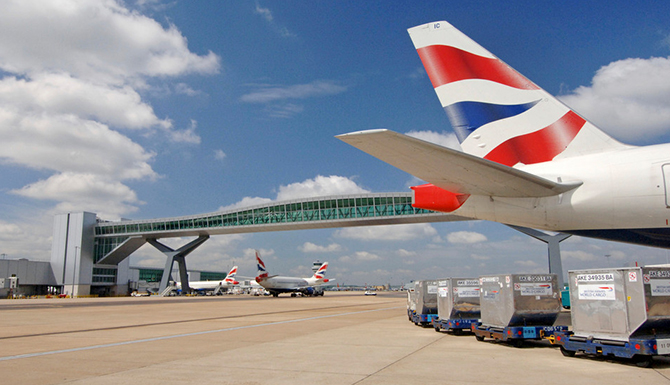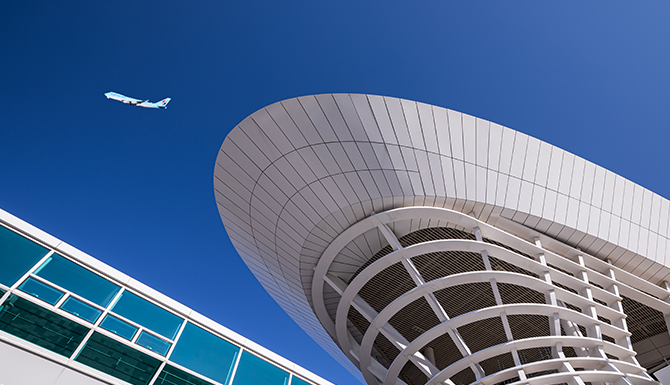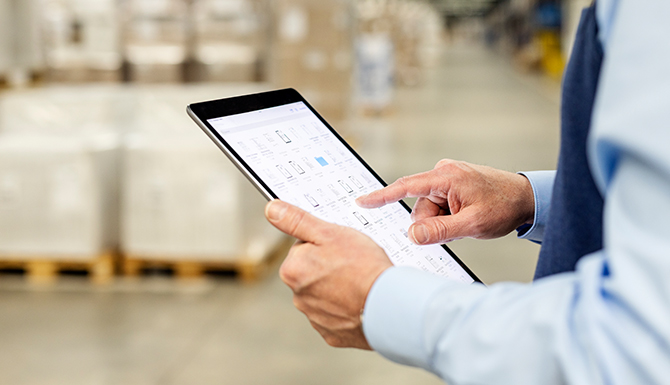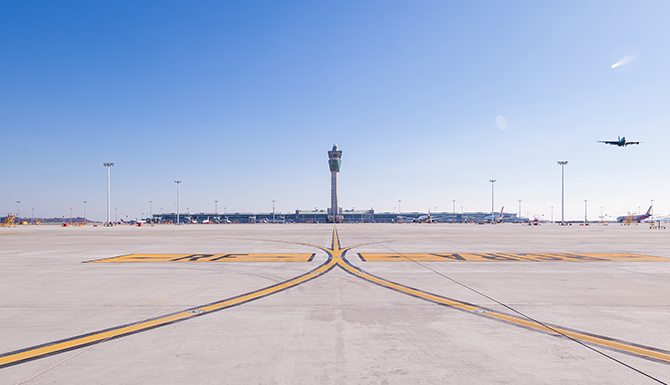Global Logistics Hub
-
Second in the World in International Air Cargo Traffic
Ongoing Development of Logistics Infrastructure and Network
Since its opening in 2001, Incheon International Airport has continuously developed its logistics infrastructure and network. As a result, in 2021 and 2022, the airport handled the second-largest volume of international cargo in the world, maintaining its position as a central logistics hub in Northeast Asia. The annual air cargo volume—which was only 1.19 million tons at the time of the airport’s opening—reached a cumulative total of 10 million tons by early 2006 or a mere five years later. The cumulative total reached 40 million tons by early 2018, and 50 million tons in just about three and a half years, accelerating the growth of air cargo traffic.

-
A Premier Northeast Asian Air Logistics Hub with Exceptional Location
High Transshipment Cargo Processing Rate
In 2022, out of the 2.95 million tons of international air cargo processed at Incheon International Airport, 1.12 million tons were transshipment cargo, accounting for approximately 38% of the total. With a higher transshipment cargo processing rate than surrounding airports, Incheon Airport solidifies its position as a logistics hub airport in Northeast Asia.

-
An Air Network Connecting the World
Incheon Airport’s Aviation Network Operates Non-Stop 365 Days a Year
As of December 2022, Incheon International Airport’s network connects to 152 cities in 53 countries through 87 airlines, operating non-stop 365 days a year. The destinations include 20 in China, 6 in Japan, 10 in Southeast Asia, 27 in North America, 5 in Latin America, and 18 in Europe.
Incheon Airport Air Network- 87 Airlines
- 53 Countries
- 152 Cities

-
Getting Ready to Advance into a Mega Hub Logistics Airport with the Capacity to Handle 6.3 Million Tons through the Fourth Phase of Construction
World-class Business and Logistics Hub
Incheon International Airport is currently moving forward with its fourth phase of construction, with plans to become a “Mega Hub Airport” capable of accommodating 106 million passengers, 600,000 flights, and 6.3 million tons of cargo annually upon completion. As the key facility of the fourth phase, the fourth runway was successfully opened on June 17, 2021; the expansion of Terminal 2 is expected to be completed by 2024, positioning the airport as the world’s premier hub for business and logistics.

-
Emerging as a Perishables Hub with the Opening of the Cool Cargo Center
Initiation of Specialized Perishables Handling Facilities
Temperature-sensitive cargo sees a 20% increase per annum, driven by the COVID-19 pandemic and rising income levels. In response to this trend, Incheon International Airport launched the “Cold Cargo Center” in September 2021 within the airside (aircraft operating area) to minimize transfer times for bio-pharmaceuticals and perishable goods, ensuring safe handling even in severe weather conditions to establish the airport as a leading perishables hub.

-
Gaining Momentum as the Logistics Hub through the Expansion of the Free Trade Area
Providing a More Competitive Environment
Incheon International Airport’s Free Trade Area consists of the Airport Logistics Complex and Cargo Terminal area, offering customers a more competitive environment with convenient customs procedures, duty-free benefits, and various incentives. In April 2005, 2,093,000 square meters was designated as a Free Trade Area followed by an expansion in December 2007 when an additional 922,000 square meters of the First Airport Logistics Complex was also designated. Subsequently, in April 2020, 326,000 square meters of the Second Airport Logistics Complex was designated as a Free Trade Area. Tenant companies are guaranteed the freedom to engage in manufacturing, logistics, and trade activities, benefiting from low rental fees and customs duty deferment among other advantages. The Airport Logistics Complex and Cargo Terminal areas are interconnected via a direct return route, allowing for seamless movement between them without additional transportation procedures, enabling high-value-added logistics activities such as simple processing, assembly, and consumption reporting, and allowing companies to respond proactively to the rapidly changing global business environment. Currently, 35 logistics companies and one manufacturing company are operating within the Airport Logistics Complex, evolving from simple export-import logistics to high-value-added or converged logistics. In addition, the Cargo Terminal area houses major global express carriers such as Korean Air, Asiana Airlines, and international couriers within its eight cargo terminals, three air cargo warehouses, four specialized processing facilities, and two customs-bonded areas, establishing a robust logistics hub.

주요사업-물류서비스-자유무역지역 확대 통해 항공화물 허브화 가속 안내- 구분, 일반화물터미널, 글로벌특송사, 항공화물창고, 특수목적시설, 세관보세구역 Category Applicable Facilities General Cargo Terminal Korean Air 1, 2
Asiana
AACT 1,2
Foreign AirlinesGlobal Express Carriers DHL
FedExAir Cargo Warehouse Northern Air Cargo Warehouse
Incheon Air Cargo A, BSpecial-pPurpose Facilities International Mail Logistics Facility
U.S. Military Mail Facility
Incheon Customs Logistics Center
Hazardous Materials StorageCustoms Bonded Area Customs Designated Storage
Customs Office -
Continuous Operations Since Opening and the World’s Fastest Customs Service
24-Hour Clearance System
Since its inauguration in 2001, Incheon International Airport has maintained uninterrupted operations for 190,000 hours, ensuring the highest levels of safety. Leveraging UNI-PASS, the advanced electronic customs clearance system developed by the Korea Customs Service, Incheon Airport offers the fastest service among the 177 member countries of the World Customs Organization (WCO), providing a delay-free logistics environment with 24-hour clearance capability.

-
First in Asia to Obtain the Highest Runway Operating Grade (CAT-III, RVR 75 m)
Asia’s First Highest Runway Operating Grade
In 2003, Incheon International Airport became the first in Asia to achieve the highest runway operating grade (CAT-III, landing visibility minimum RVR 100 m / takeoff visibility minimum RVR 175 m). Currently, all four runways operate at CAT-III (RVR 75 m), allowing aircraft to land safely even under low visibility conditions with runway visibility range of as short as 75 meters.

- Telephone : +082-32-741-2276
- Email : logistics@biz.airport.kr
- Managing department : Logistics Development Team

